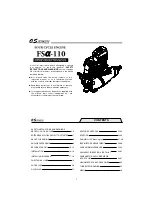
H u d s o n M a n u a l / R e v . 1 . 2 1
2 8
T
EKNIC
,
I
NC
.
P H O N E ( 5 8 5 ) 7 8 4 - 7 4 5 4
Cable Making Guidelines
The following guidelines are provided help minimize cable design, fabrication,
and application errors.
General Recommendations
1. The pitfalls of hand crimping tools.
Hand crimping tools, when properly selected and used by a skilled operator,
make good crimp connections. However, since these tools are expensive,
typically $200 - $400 each, technicians don't always have the wide variety
required to make proper crimps on all of the terminal types and wire sizes
they encounter.
Unfortunately, it’s easy to use the wrong tool and not realize it, or even more
likely, to use the wrong tool and think it’s "probably OK". Hand crimp tools can
be awkward to use and often require practice and a certain “feel” to achieve
consistent, high quality results. In addition, hand tools generally don't have
built-in quality assurance features.
In certain instances, you may need to make a hand crimped cable, for
example, when you’re in a hurry for a custom length cable. If you do:
•
Be sure that you have the exact hand tool and die that the
terminal manufacturer recommends–for each terminal.
•
Perform a visual inspection of each terminated wire to ensure that the
insulation is properly captured in the strain relief closure and the bare
wire is captured in the conductor closure.
•
always perform a "pull test" on each wire connection before inserting
it into the connector housing. If a wire can be pulled out of the
terminal with a few pounds of force, the crimp was faulty.
Note:
Each type of crimp terminal requires a specific handset and die. Failure
to use the proper tool, die, terminal, or wire for the job will likely result in poor
quality terminations and premature cable failure.
2. Verify that your cable shop has all of the proper tools and equipment.
Use a cable shop that has automated presses for wire termination and make
sure they have the proper applicator "heads" (dies) for the exact terminals
used. (If they don't, consider buying applicator heads for them). It's strongly
preferred that they have presses with automatic "crimp height" checking as
this in-process check is the main measure of termination quality. Making this
100% check without requiring human intervention is a key advantage. If they
don't have these automatic crimp-height-checking presses, make sure their
general procedures include checking the crimp height on first articles and
periodically during a run of cables. Avoid patronizing cable shops that use
hand tools only.



































